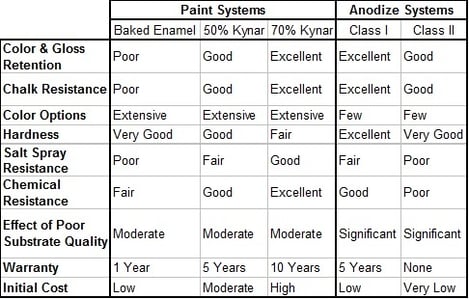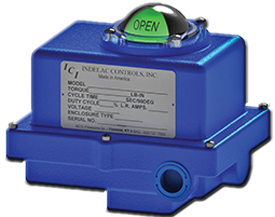Due to the nature and physical properties of anodic coatings, anodized aluminum products and components are used in thousands of commercial and consumer food processing applications, including:
- Automatic Icemakers
- Display Cases
- Pans
- Coolers
- Grills
- Traditional and Deep-Dish Pizza Pans
- Bake Ware
- Gourmet Cookware
- Automated Packaging Equipment
- Food Processing Equipment
This is just a small sample of food-related products made, in whole or part, of anodized aluminum.

Anodized Aluminum Actuator Enclosures
Some manufacturers, including Indelac Controls, offer a comprehensive range of electric actuators with aluminum anodized covers and bases for use in many industries including OEM manufacturers of food processing equipment, and preparation equipment for both the commercial and industrial sectors. Many types of anodizing are available for our enclosures including, but not limited to:
- Sulfuric Anodizing
- Chromic Anodizing
- Hardcoat Anodizing (Hardcoating)
- Clear Coatings
- Color Anodizing
Once anodized, actuators can be dyed in wide range of metallic tones, and hundreds of colors for enhanced design elements or for branding and private labeling purposes.
The inherent properties of anodic coatings make them ideal for many applications in food processing and preparation. One unique feature of anodizing is that ice will not stick to anodized aluminum parts. Additionally, anodized aluminum is waterproof, resists to wear, corrosion, mold, fungus and it never chips or peels while remaining easy to clean.
Anodized Aluminum vs. Stainless Steel Electric Actuators:
Some of the benefits of anodized aluminum components in place of stainless steel include:
- Less weight
- Less expensive to produce
- Less expensive to handle and ship
- Machining is twice as fast as for stainless steel
- Tighter tolerances – machine components can be anodized without changing the dimensional requirements
- More durable hard surface
Anodized aluminum can replace stainless steel electric actuators in certain applications, yielding savings in material costs, maintenance and part replacement, to name a few. The ways that anodized actuators can be used instead of stainless steel actuators are virtually endless, limited only by designers and engineers’ imaginations.
A good example: an aspirin maker was having problems with a piece of equipment made from 316 Stainless Steel. The aspirin dust was cutting a groove into the surface of the stainless steel parts. They replaced with anodized aluminum parts. The new aluminum parts eliminated the problem, plus gave the added benefit of a cost reduction due to less required maintenance and part replacements.
Below is a table comparing painted enclosures with anodized enclosures:








